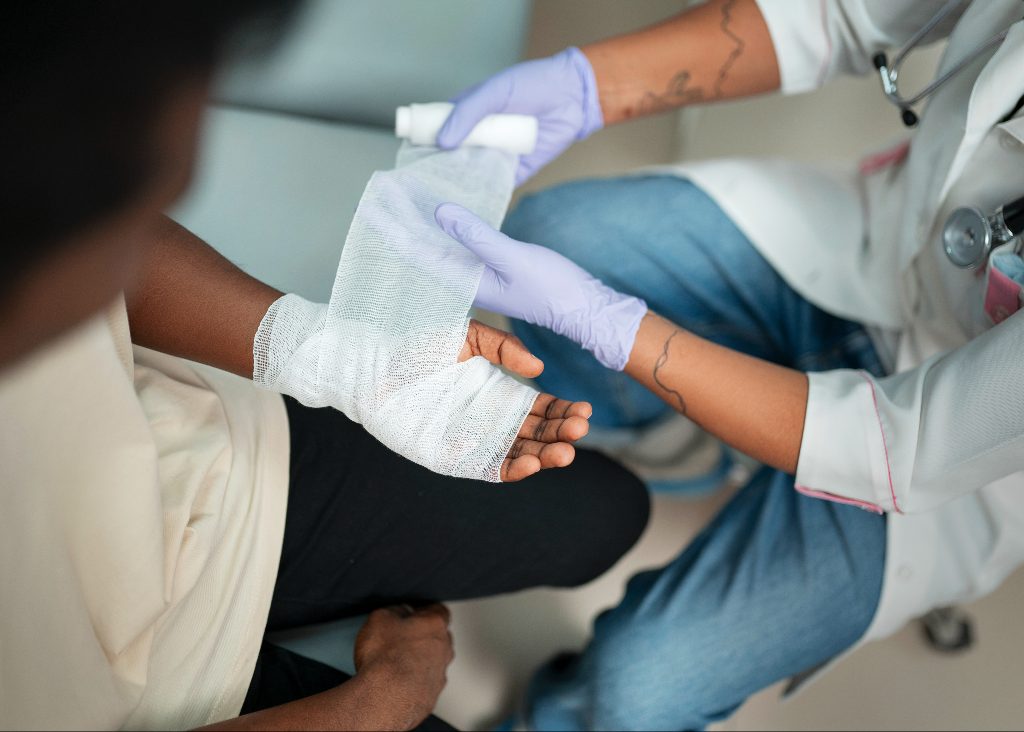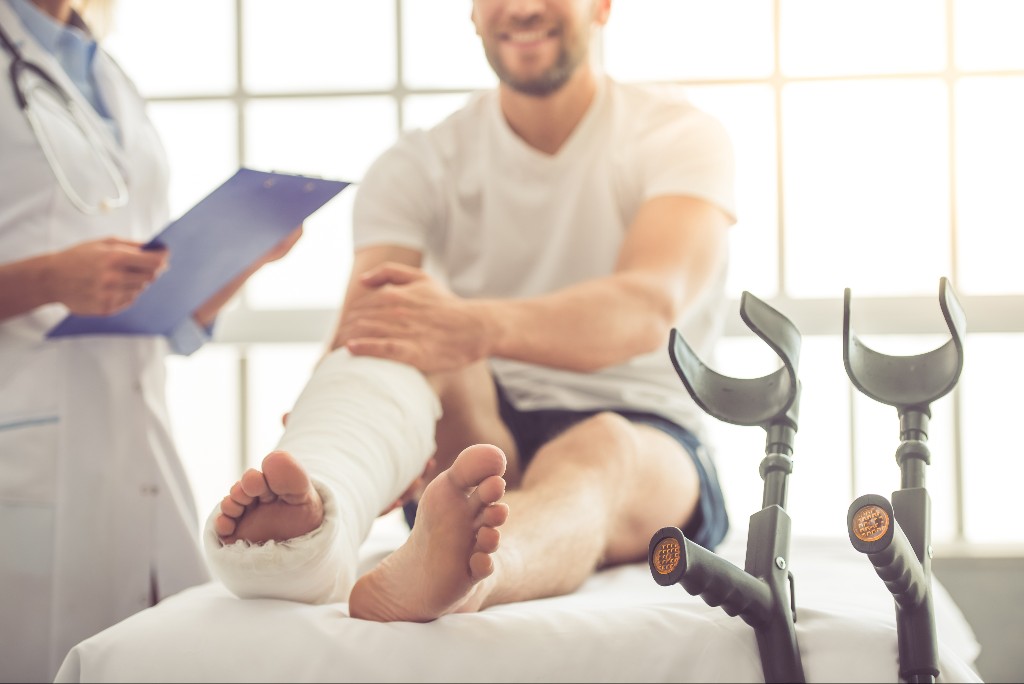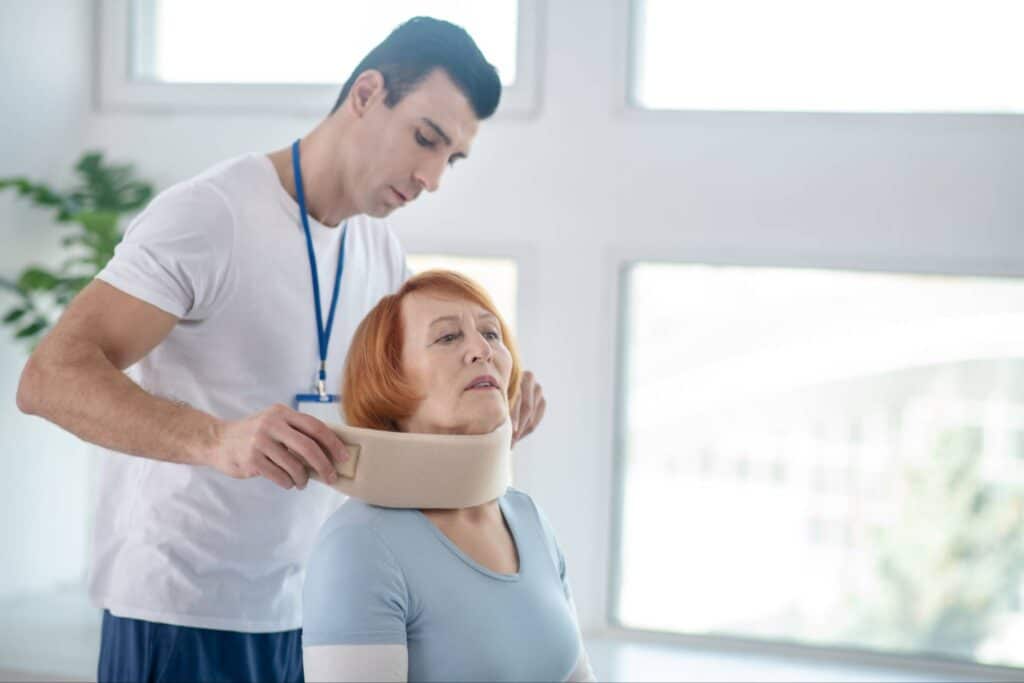An abnormal curve in the spine is known as scoliosis. A typical shape of the spine has a forward curve near your shoulders and a forward curve in the lower back. When the spine curves from side to side, like the letter S or C, then you may have scoliosis. While scoliosis affects only 2-3% of Americans, that is actually millions of people! It is not uncommon to know someone who has scoliosis. This condition can affect people of all ages, from infants to the elderly. There are many different types, causes, and symptoms of scoliosis. If you have scoliosis, you may be looking for back pain treatment to help ease your symptoms.
Common Causes of Scoliosis
For around 80 percent of people with scoliosis, there is no identifiable cause. When possible causes of scoliosis are unknown, it is referred to as idiopathic. Scoliosis can develop at different ages and can be structural or nonstructural. Structural scoliosis refers to when the abnormal curvature of the spine has a specific cause, like a birth defect, injury, or disease. Structural scoliosis is typically permanent. On the other hand, nonstructural scoliosis typically refers to temporary curves in the spine that can be fixed. Less common causes of scoliosis include congenital and neurological. Congenital causes of scoliosis include deformities of the spine that were present at birth, such as spina bifida. Neurological causes of scoliosis refer to when abnormalities of the nerves affect the muscles that support the spine. Cerebral palsy is an example of a nervous system disorder that can affect your spine and lead to scoliosis. Spinal injuries or infections may also lead to scoliosis.
Types of Scoliosis
There are many different types of scoliosis depending on your age and the cause of abnormal spinal curvature. Here are 5 types of scoliosis and their symptoms and causes.
Early Onset Scoliosis
Scoliosis that is diagnosed before age nine is typically known as early-onset scoliosis or juvenile scoliosis. Infants, toddlers, and young children can develop scoliosis because their bodies are still growing. Parents and guardians should pay attention to the symmetry in their child’s body. You may note whether one shoulder looks higher than the other or if their hips do appear uneven. Early detection of scoliosis in young children can help your child get the treatment they need to prevent further complications as they continue to grow.
Adolescent Idiopathic Scoliosis
Adolescent idiopathic scoliosis refers to when the condition is diagnosed between the ages of 10 and 18 with no underlying cause. Adolescent idiopathic scoliosis is the most common type of scoliosis. Adolescents at this age continue to grow, and sudden growth spurts can increase asymmetric growth. Scoliosis affects 4 in 100 children between 10 and 18 years of age. In many cases, adolescent idiopathic scoliosis can be identified by visual symptoms like uneven shoulders or hips. Your child may also experience lower back pain. Your doctor will likely recommend treatment interventions as soon as an abnormal curve is detected.
Degenerative Scoliosis
Adult-onset scoliosis is also known as degenerative scoliosis. This type of scoliosis has also been referred to as late-onset scoliosis or de novo scoliosis. This type of scoliosis is typically linked to bone health and occurs with degeneration of the spinal discs and joints. As we age, the natural wear and tear on the body can lead to degeneration and may make spinal curvature more pronounced. While some types of scoliosis may not cause pain or other symptoms, degenerative scoliosis can lead to aches and pains, stiffness, and tingling sensations that start in your back and may radiate into the leg.
Neuromuscular Scoliosis
Another health condition can cause you to develop what is called neuromuscular scoliosis. Underlying conditions like cerebral palsy, muscular dystrophy, and spinal muscular atrophy can contribute to neuromuscular scoliosis. The abnormal spinal curvature may become very pronounced and affect your posture.
Congenital Scoliosis
Congenital scoliosis is a rare form of scoliosis that can affect newborns. Spinal abnormalities may develop in the womb and can result in a sideways spinal curvature like scoliosis. Malformation of the spine before birth can lead to congenital scoliosis.
Where Does Scoliosis Occur?
Depending on the type and severity of scoliosis, you maynotice one shoulder blade or hip that is higher than the other. Different types of scoliosis curves can occur anywhere along your spine, though it most commonly occurs in the thoracic spine. These are the three places scoliosis may occur in your spine and how scoliosis types can affect you.
Thoracic Scoliosis
Thoracic scoliosis is the most common type and occurs in the middle part of your back, known as the thoracic spine. Your rib cage extends from the thoracic spine and may be affected by the spinal deformity. If your rib cage is asymmetrical, you may notice one of your shoulders is set higher than the other. This can also cause one of your legs to appear longer than the other.
Lumbar Scoliosis
Lumbar scoliosis refers to abnormal spinal curvature in your lower back, known as the lumbar spine. If you have lumbar scoliosis, then your hips may appear uneven, and one of your legs may appear longer than the other. Lumbar scoliosis is common with degenerative scoliosis in people over the age of 50 as the spinal discs and joints start to break down.
Thoracolumbar Scoliosis
When the abnormal curve of the spine affects both the thoracic spine and the lumbar spine, it is known as thoracolumbar scoliosis. This type of spinal curvature typically occurs with congenital scoliosis. Thoracolumbar scoliosis is more common in females than males and typically causes a curve toward the right.
Treatment Options for Scoliosis
Treatment for scoliosis in children and teens should begin as soon as possible to help address their growing bodies. Adults can also find treatment options for scoliosis to help manage their pain and other symptoms. To properly diagnose scoliosis, your doctor will likely perform a physical exam and run diagnostic imaging tests to look for scoliosis. This will help determine the degree of abnormal spinal curvature and other factors. Here are examples of treatment options for scoliosis.
Pain Management
Your doctor may recommend a combination of treatments to provide pain management and relief. Back pain treatment may not correct the curvature itself but can help reduce your pain and discomfort. Over-the-counter medications for pain and inflammation can help reduce your pain. Your doctor may also recommend stretches and exercises to help your spine stay flexible and strengthen the muscles that support your spine and back. Exercise will also improve your general health and wellness. Your doctor may recommend you work with a physical therapist to learn the proper technique for exercises that will best support your spine and benefit you.
Chiropractic Care
Chiropractic care can provide you with non-invasive and all-natural treatment options for scoliosis pain and discomfort. A chiropractor who specializes in scoliosis can provide you with gentle, therapeutic treatment options to help reduce your pain. Chiropractic care can help increase flexibility in your back and spine and provide you with tools for living with scoliosis. Your chiropractor may also recommend massage therapy to help relieve muscles that may be tense or stretched out due to scoliosis.
Bracing
When the spine is still growing, a brace may be used to support the spine and prevent the abnormal curvature from increasing. A brace won’t straighten your spine, but it will help prevent further development that may impact your health and wellbeing. The effectiveness of a brace for scoliosis will increase based on the number of hours a day it is worn. Your doctor may recommend a child wear a brace into adolescence or when their bones are done growing. The two main types of braces are underarm and Milwaukee braces. The underarm brace is typically made of plastic and fits close to the body. This type of brace is more commonly used to treat lower spine curves and is worn near the waist. The Milwaukee brace is worn at the neck and covers the entire torso. This type of brace is typically only recommended when the underarm brace cannot successfully address a severe curvature.
Surgery
Surgery is typically only recommended for people with an abnormal spinal curvature greater than 40 degrees. If the abnormal curve to your spine is negatively impacting your daily life or causing you significant pain and discomfort, then your doctor may talk to you about your options for surgery. The standard surgery for scoliosis is called spinal fusion, where the vertebrae in the spine are fused together with a bone graft, rods, and screws. Spinal fusion will help stabilize the spine in a straight position.
If you have scoliosis, visit a doctor at AICA Orthopedics near you for effective back pain treatment options. Our team of doctors includes orthopedists, chiropractors, neurologists, and physical therapists who can provide you with comprehensive care to address your specific goals for treatment. Find an AICA Orthopedics location near you and get started on treatment for back pain relief for your scoliosis.





